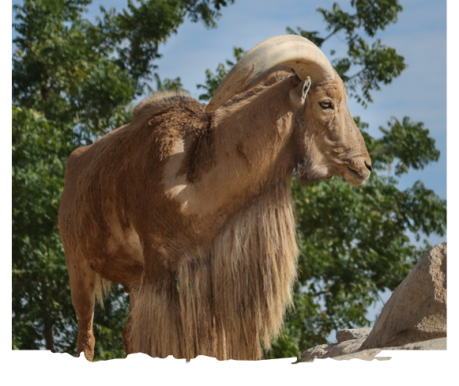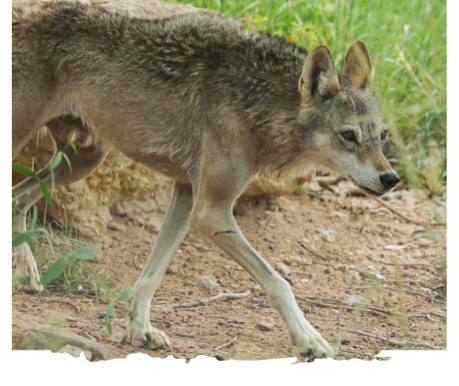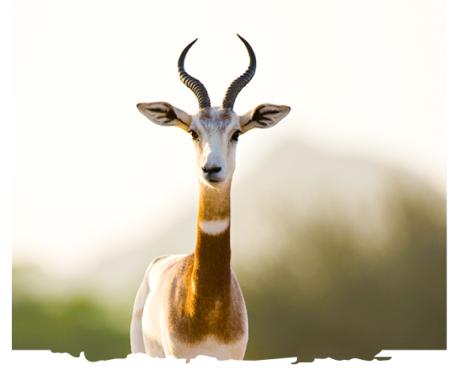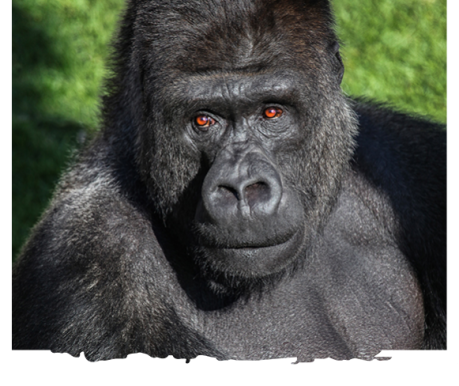Name: Rothschild’s giraffe
Scientific Name: Giraffa camelopardalis rothschildi
Hello there! I am Zaafarana a Rothschild’s giraffe, have you visited me at Al Ain Zoo? If you haven’t, then it’s time to plan a trip! Did you know that we were named after a very famous person, Walter Rothschild, a London zoologist, a member of the well-known banking family, and the founder of Tring Museum? He also has insects, fish, spiders and various types of fauna named after his surname; isn’t that very neat?
I am sometimes called a Baringo giraffe, named after Lake Baringo in Kenya where my kind lives, and I am also known as the Ugandan giraffe. The International Union for Conservation of Nature officially recognizes one giraffe species and nine sub-species. According to them, we Rothschild giraffes are classified as ‘near threatened’ on the red list category of endangered animals.
Rothschild’s giraffes are not the tallest of our species, but we can grow to be one of the tallest, measuring up to an astonishing 5.8 meters in height and weighing an average of 1,192 kilograms. Males are usually a bit heavier than females, and our bodies are designed to give us speed, power, and agility. Predators can be sensed from a distance because of our excellent sight, hearing, and smell.
We are often confused with Masai giraffes, but when you look closely, you will notice that our coat design differs from theirs. The spots on our coat are large and can be a mix of two colors, like chocolate brown in the center to light brown at the edges with a thick border. Our spots are surrounded by creamy yellow colors, and this contrast makes our spots stand out beautifully. Did you know that one of the distinct traits of a Rothschild giraffe like me is that we have white lower legs that look like knee-high socks? That’s because the spot pattern fades and disappears from below the knees to our hooves or feet! Another totally unique thing about us is that we are born with five ossicones, the antenna-like calcium accumulations that stick out of our heads. We have the usual two in the front that can grow up to 13 cm, with another small one on our forehead and a smaller pair behind our ears.
One of the coolest things we have in common with people is that we have the same number of neck vertebrae. Do you know how many? Seven! Yes, even if it looks like we have more.
Habitat:
We live in savannahs, grasslands, and the open woodlands of Uganda and Kenya, where we can roam around the wide isolated spaces and be surrounded by lots of trees, plants, and bushes. However, due to our reduced numbers, we are sadly regionally extinct in South Sudan and the northeastern areas of the Democratic Republic of Congo.
Threats:
Rothschild’s giraffes used to be on the IUCN’s Red List under its “endangered” category, but in 2018 we were moved to the safer “near threatened” category, thanks to efforts to protect the species by establishments like Al Ain Zoo, Uganda Conservation Foundation, and other giraffe conservation centers. There are only a few locations left where you can see giraffes like me in the wild, including Lake Nakuru National Park in Kenya and Murchison Falls National Park in northern Uganda. Threats to our population include predators such as leopards, lions, crocodiles, and hyenas, and the four IUCN recognized threats: habitat loss, civil unrest, poaching, and ecological changes.
Range:
Rothschild giraffes live in small populations in western Kenya and northern Uganda, where 60% of our kind may be found.
Additional Information:
Rothschild’s giraffes only eat plants, which is why we are called herbivores. We eat various types of food that are seasonally available. Having a long neck and extra-long tongue helps us to get the very high and tasty leaves that other animals can’t reach!
Fun fact:
Our tongues can reach up to half a meter long and are so powerful that we can use them to wrap around things, like you humans do with your fingers and draw them to our mouths to feed!
Conservation Action:
We are one of only two subspecies of giraffes that have improved their conservation status from ‘endangered’ to ‘vulnerable’ and ‘near threatened’, the other is the Western African giraffe.
Like many endangered animals, we need help from you and the world’s conservationists to help us breed and translocate to the wild to rebuild our population. Conservation education is vital to creating awareness of our plight, especially among the youth, and joint efforts between schools, governments, and conservation organizations, like those at Al Ain Zoo, are needed before we become extinct.





